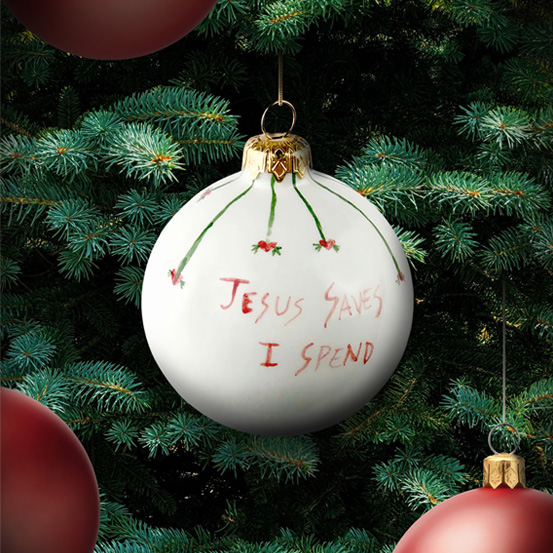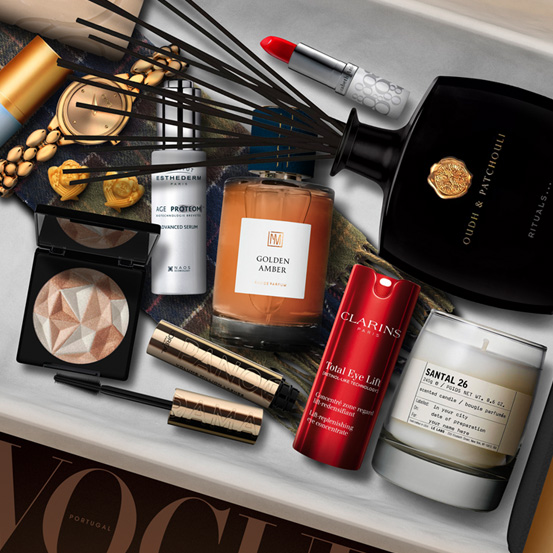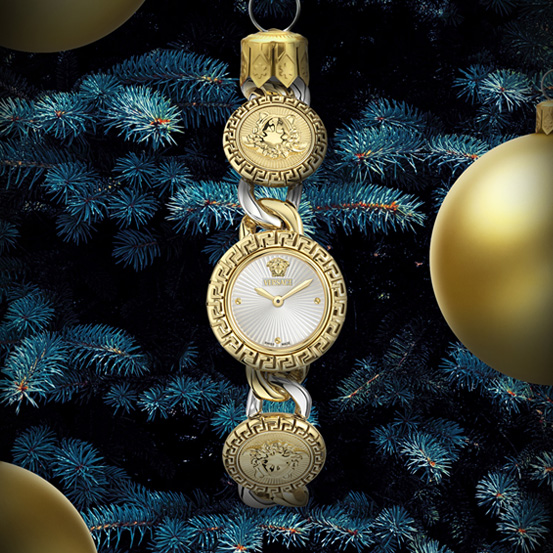You may not know his name, you may not even distinguish his face, but you absolutely know his work. The advertising campaign for the iconic CK One, back in the 90’s? He did. Madonna’s Sex book? He did it. The visual revolution of Vogue Italy? Check. In a career spanning more than 30 years, this serene-eyed Frenchman has been responsible for some of the most memorable moments in the history of Fashion. Fabien Baron, who according do Vanity Fair is “the most sought-after creative director in the world”, recalls a journey where art is, always, the most important thing.
You may not know his name, you may not even distinguish his face, but you absolutely know his work. The advertising campaign for the iconic CK One, back in the 90’s? He did. Madonna’s Sex book? He did it. The visual revolution of Vogue Italy? Check. In a career spanning more than 30 years, this serene-eyed Frenchman has been responsible for some of the most memorable moments in the history of Fashion. Fabien Baron, who according do Vanity Fair is “the most sought-after creative director in the world”, recalls a journey where art is, always, the most important thing.
It took more than three decades for him to decide to launch a monograph. He could have done it before, way earlier, because the volume, and the quality, of his work easily blend with the concept of those limited-edition coffee table books that the 21st century has learned to obsess over. Instead, he waited. He hoped for the instinct to speak louder, for the curiosity to be heightened, for the creative glow to reach new heights. And then he decided to share with us, who accompany him from afar, Fabien Baron: Works 1983-2019, a visual biography that looks to both the past and the future. It’s not all here, it would be impossible, but it’s more than enough to make us believe in the impossible. Fabien Baron (Antony, Hauts-de-Seine, France, 1959) doesn’t see the same things we do. He is from a place that sways somewhere between the real and the imaginary, a magical place where dreams of all colors are invented. Some of these dreams have familiar names: Calvin Klein, Giorgio Armani, Burberry, Givenchy, Saint Laurent, Fendi, Guerlain, Dior. Others write pages that occupy places of honor in our collective memory: Vogue Italy, Vogue Paris, Interview, Harper’s Bazaar, Arena Homme Plus. Behind all of them, ensuring that they don’t get lost in the ether of ideas that never happen, is a man whose life is confused with the most striking images of what we learned to call pop culture.
Fabien Baron: Works 1983-2019 is your first monograph. What took you so long to publish a book like this?I actually had signed a contract with Phaidon many years ago, but putting the book together felt truly overwhelming and time consuming. I knew I did not want the book in chronological order, so the big question was how to mix all the work together so it made sense as a whole. That took some time and it was not until last year that I was totally certain of the direction to take. Once that was set, the book was designed in six months.
How did you decide which of your works should be included, and which ones should be left out? Did you feel overwhelmed when scavenging the archive?Going through the archive was definitely painstaking, but what took the most time was preparing all the work in a way that each piece was print ready. The final selection was very natural and followed the concept of the book: 10 chapters representing ten different aspects of my point of view and vision. An auto-portrait, of sorts. A contradiction between chaos and order.
What is your intention with this book? You’ve mixed commercial work with some, more personal, work. Does that have a purpose?The book is there to open a window to my work as a whole; a sort of manifesto of my design philosophy. People know me through my commercial work, magazines, advertising, films and product design, etc., but for the past thirty years I’ve been working on my own artwork and some of that work is sampled in the book for the first time. I’ve accumulated quite a large archive and it’s only now that I feel comfortable publishing some of these works of art.
When it comes to more practical issues, like the design, the format, and the scale of the book, what was the aesthetic that put them all together?Before all, I wanted the book to be an object and for the printing to be really special. It was important to me to show the work in a different context than where it came from originally. […] I worked with Sue Medlicott on the production side, printing, paper choice, binding etc. Sue was absolutely amazing, she made it all happen in ways I could not even dream of and she delivered a beautiful object. Working with Phaidon was also a dream. They immediately understood the level at which we needed to make this book.
You are an art director. What could be the correct definition of art director, these days?It’s difficult to say, as everyone is a creative something or other these days. So the title is kind of meaningless. I’ve actually never worked with a title in mind myself, and I’ve tried to put my fingers into anything communication related from magazines to films, to books, to products, and to advertising. My approach has always been the same whatever the medium: think like a story teller. Don’t over complicate what you have to say, just tell the story. And of course, you have to be a problem solver if you want to be successful. That’s probably my definition of a good creative director.
You have been working with magazines for more than 30 years. What makes them so appealing to you? What I like about magazines is the pace at which you have to work. The fact that you have to create so much content under a tight deadline is exciting. I like having little time to make decisions. Using your spontaneity is important. There's never a perfect issue but there is always the next one you can improve. It’s an ever-ending process that keeps you on the edge.
Do you think that, as some say, print is dead? Are magazines still relevant?I think print will ultimately last, but magazines will have to rethink their content in a big way if they want to be sustainable in the future. If magazines have lost their raison d’être, it’s because they're offering mediocre content, or emulating digital in a desperate way. They sell out to advertisers. Magazines lack a solid point of view and a true connection with the reader. It’s very difficult to do a good magazine that people want to pick up. And with digital in everybody’s hands, it’s easy to bypass magazines.
You redesigned Vogue Italia and Vogue Paris. How did you approach these two commissions?Vogue Italia with Franca Sozzani was quite revolutionary for the time. We sort of broke the rules. I was young, ready to experiment, my gut was talking. It was a great moment of total creativity. Then there was Interview and the great years of [Harper’s] Bazaar, and then Arena Homme Plus. Vogue Paris came more than twenty years after Vogue Italia. It was not the same time, or editor, or fashion. I had accumulated a lot of experience through the years, so my work for magazines was more refined, calculated to a point. Working with Carine Roitfeld was exciting and definitely fun. She had a big moment and I was part of that.
You mentioned the necessity of “emulating” digital. How did the transition to digital communication changed the way you approach your work?I was actually excited with this new medium. My mind is used to adapting to change, and since I’ve dipped into many different fields and mediums, when digital came along it was like getting a new set of pencils to explore with. I’ve never been scared of things moving forward or changing. This is the way life is going, forward.
You also have a long relationship with the Fashion industry. What still excites you about Fashion, after all these years?Fashion will always excite me. It’s always changing and moving with the times. It is a barometer of life. Sitting at a great show, seeing something new is why I do what I do. If I’ve carved out a small place in fashion for myself, it’s because I have a very distinct style, a specific point of view that I was never afraid to use. My work has been emulated by many throughout the years and I feel good about that.
Fashion is pretty much a collaborative process. And you have worked with everyone from Kate Moss to Madonna to Franca Sozzani to Steven Meisel. Is there anyone you missed? Who did you feel most connected with?I’ve been very lucky and, yes, I have covered my bases with all the best collaborators in the business. Franca Sozzani was extraordinary, she was tough and she knew what she wanted and she never gave up on anything. I have fond memories of her. For Liz Tilberis [iconic director at Harper’s Bazaar] as well, she was an angel to work with.
The public remembers your work for Calvin Klein, more recently some Dior campaigns, but there is another side, a more commercial one, when we find brands like Zara. How do you go from one brand to the other without missing your point of view? My point of view is important, of course, and it’s always part of the mix when I develop concepts for brands. Knowing your client, understanding what they need, and delivering high quality work right on target, will always come first. I have a lot of experience after more than thirty years in the industry, so I don’t fall into the easy traps of fashion; rather, I apply strict rules I’ve learned and practiced along the way to achieve success. But another part of the success has a lot to do with the team you work with. For Dior, dealing only with Maria Grazia Chiuri, Oliver Bialobos, and Laurence Despouys helps create a trust and allows you to be more creative. A small committee is always better. In Zara's case, it’s the same. I work with Marta Ortega and João Pedro da Silva Rebelo in a very direct line. They are probably the nicest client to work with. They’re an amazing team who just thrives for the best, a real joy to work with.
What makes a video, or a campaign, authentic? The concept has always been the key in my mind, the centre stage for good results and that concept needs to be original or otherwise it’s just copy and paste. In today’s world, everybody is working with mood boards, which is very practical to describe an idea, but it has its pitfalls. You may end up duplicating an original idea or getting influenced a bit too much by something, and I guess that’s why there is less and less authentic work out there today. Too many Google searches and Pinterest, a lot of cut and paste, and not enough brain work. The idea is what’s important at the end.
Can you read a magazine, of watch a commercial, without judging their aesthetic?I think it’s almost impossible not to have an opinion, honestly. Not that I want to criticize or put someone else’s work down, but it’s too easy for me to see through everything, to see the way everything was done, produced, and I need quite a bit to be impressed.
What do you consider to be the highlights of your career? Hopefully, my career is still up and coming, or at least that’s the way I look at things: ahead. I never think about this kind of things anyway. I am a bit of a bulldozer at the end. I just move on to the next. I don’t look back. I just like to work and then go to the next project with that same enthusiasm. I guess that’s why it took me so long to make a decision about the book. Just the idea of looking back at all the work was giving me headaches. If the book feels more timeless than nostalgic, it’s because I've looked at it as a new project, not a study of my career. All these juxtapositions of new and old work give it a modern spin, a new take.
What comes next? Do you ever feel the urge to leave everything and rest, or you have other things you want to explore, like doing a feature film?I am actually working on doing more and more film work. A feature is actually in the works at this moment. Also, I am dedicating some real time to my own work, publishing it and showing it. All very exciting. I’ve been very fortunate and I am very grateful to be in such a good place today.
This issue is about art. In your opinion, is fashion art? Anything and everything is art. It is just how you put a spin on it.
This article was originally published in Vogue Portugal's Art issue, from March 2020. Para ler este artigo em português, veja a edição de Arte da Vogue Portugal.
Most popular


Relacionados
.jpg)





